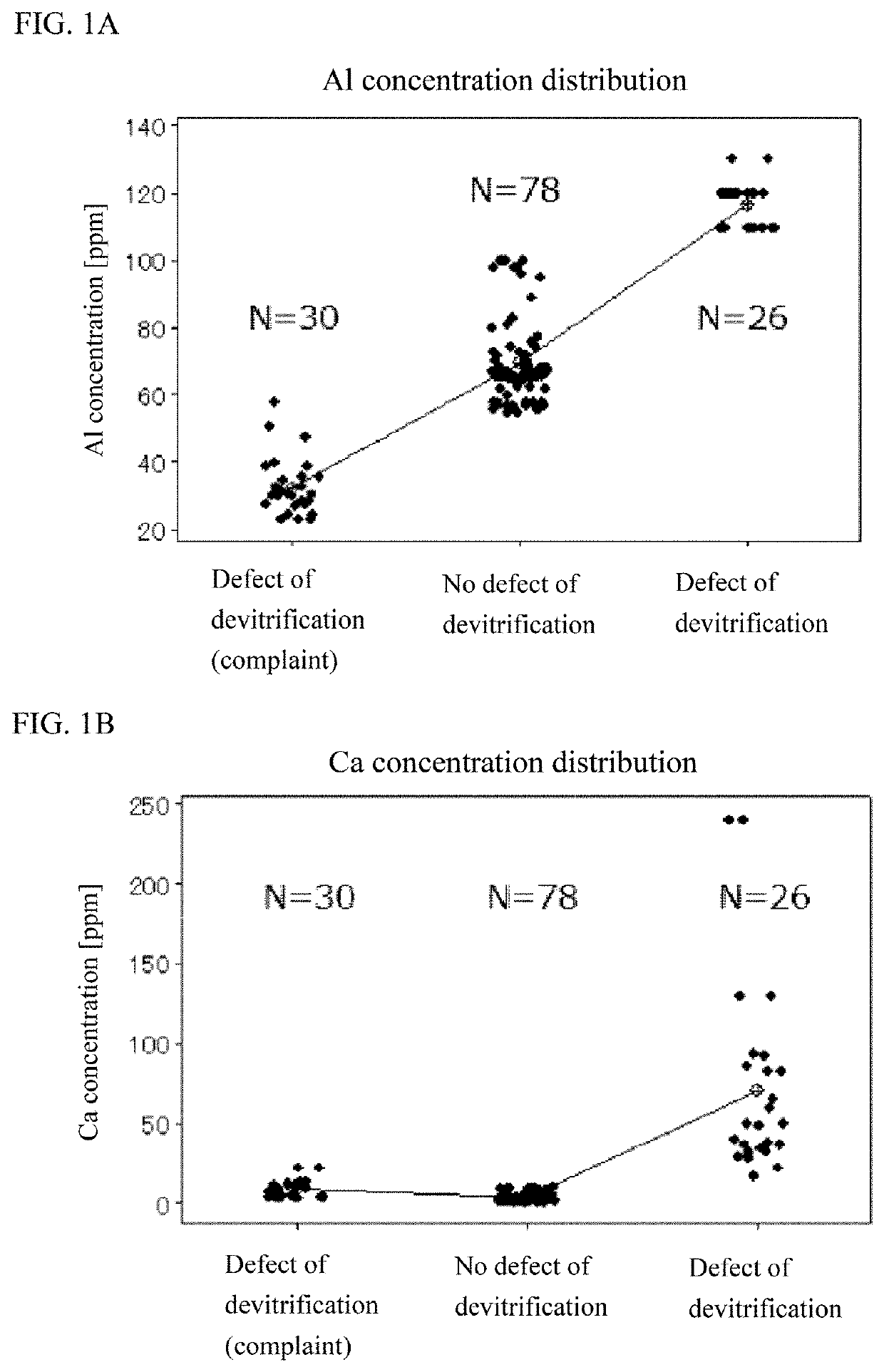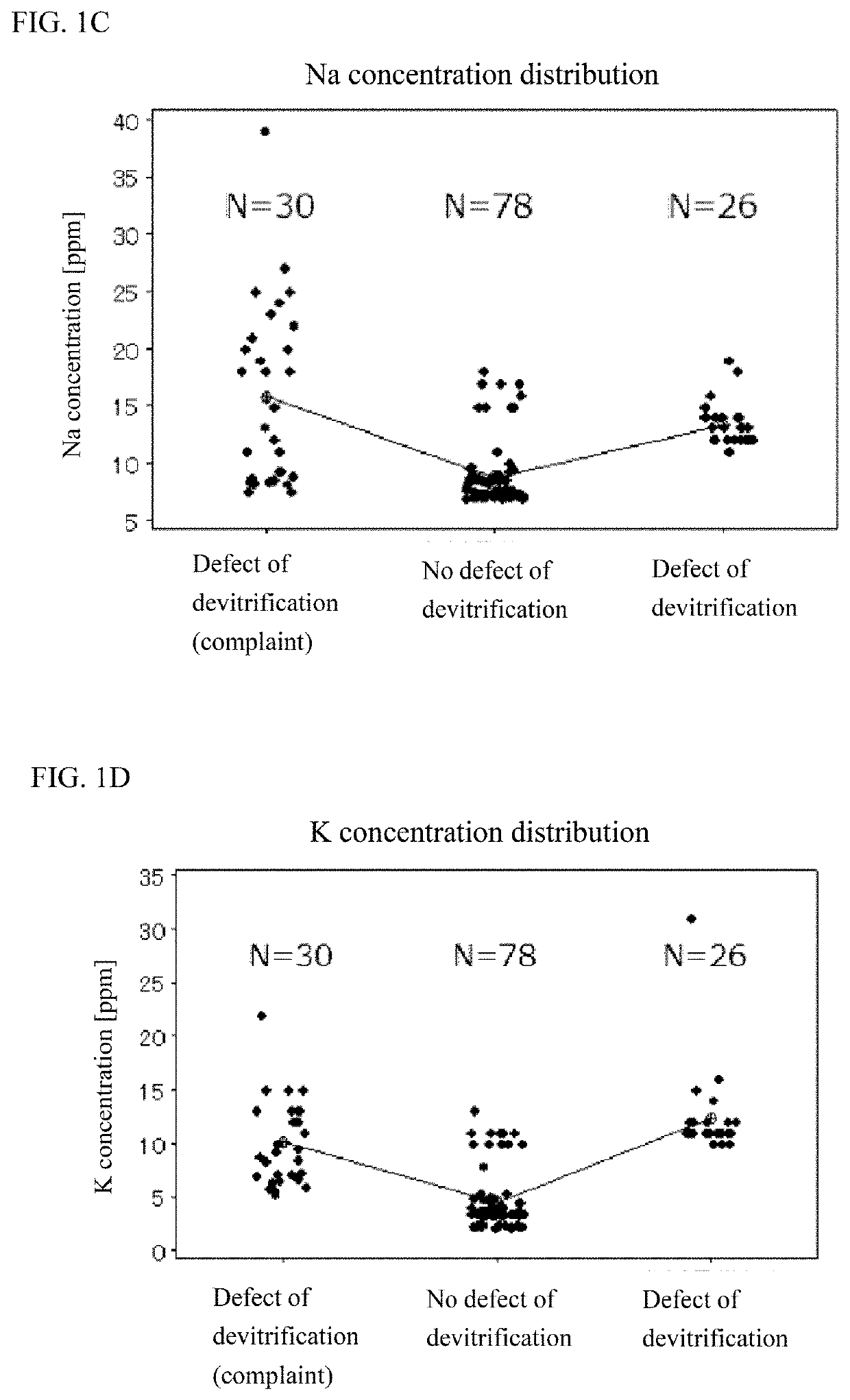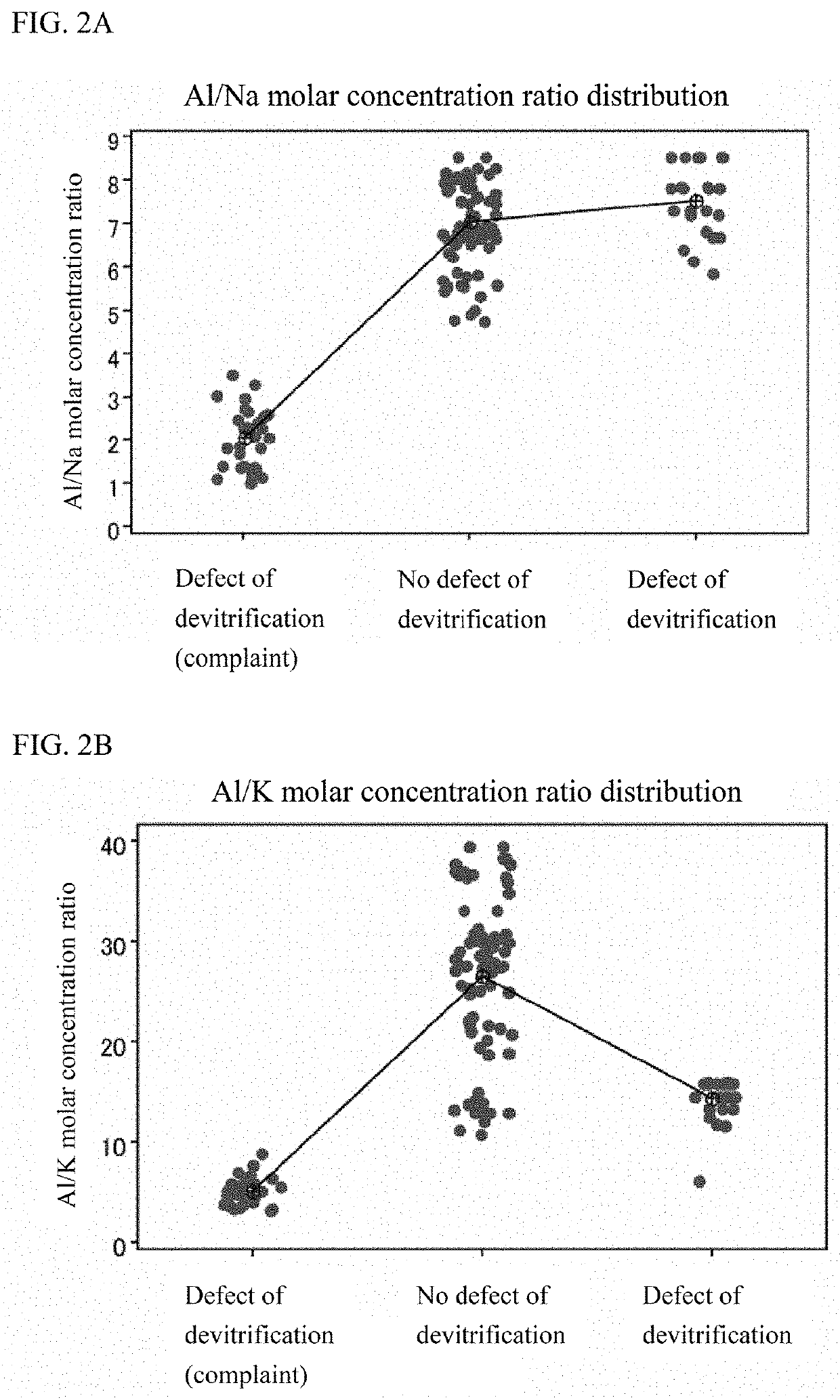Silica-glass crucible and production method thereof
a technology of silicon glass and crucible, which is applied in the direction of manufacturing tools, crystal growth process, furnaces, etc., can solve the problems of melt leakage, inability to continue the pulling of ingots, etc., and achieve the effects of reducing devitrification, retaining strength, and reducing uneven viscosity
- Summary
- Abstract
- Description
- Claims
- Application Information
AI Technical Summary
Benefits of technology
Problems solved by technology
Method used
Image
Examples
examples
[0134]The present invention is explained below in detail by reference to an Example, but the invention is not construed as being limited by the following Example.
example a
[0135]Use was made of 78 batches of raw-material silica powders (N=78) which included the following inorganic-ingredient contents determined by ICP analysis: Al concentrations, 55-100 wt ppm; Ca concentrations, 1.2-9.5 wt ppm; Na concentrations, 6.9-18 wt ppm; and K concentrations, 2.1-13 wt ppm (FIG. A to FIG. 1D). In FIG. 2A to FIG. 2C are shown an Al / Na molar concentration ratio distribution (FIG. 2A), an Al / K molar concentration ratio distribution (FIG. 2B), and an Al / Ca molar concentration ratio distribution (FIG. 2C) which are based on the results in FIG. 1A to FIG. 1D. FIG. 3A to FIG. 3C show a correlation between Al concentration and Al / Ca molar concentration ratio (FIG. 3A) and a correlation between Ca concentration and Al / Ca molar concentration ratio (FIG. 3B), which are based on the results given in FIG. 2C, and further show a graph (FIG. 3C) which is an enlargement of the graph of FIG. 3B. In the graphs of FIG. 1A to FIG. 1D, FIG. 2A to FIG. 2C, and FIG. 3A to FIG. 3C, t...
example b
[0140]Use was made of 30 batches of raw-material silica powders (N=30) which included the following inorganic-ingredient contents determined by ICP analysis: Al concentrations, 23-58 wt ppm; Ca concentrations, 3.9-38 wt ppm; Na concentrations, 7.5-39 wt ppm; and K concentrations, 5.2-22 wt ppm (FIG. 1A to FIG. 1D). Namely, raw-material silica powders each having an Al / Ca molar concentration ratio less than 15 were used in Example B.
[0141]In FIG. 2A to FIG. 2C are shown an Al / Na molar concentration ratio distribution (FIG. 2A), an Al / K molar concentration ratio distribution (FIG. 2B), and an Al / Ca molar concentration ratio distribution (FIG. 2C) which are based on the results in FIG. 1A to FIG. 1D. FIG. 3A to FIG. 3C show a correlation between Al concentration and Al / Ca molar concentration ratio (FIG. 3A) and a correlation between Ca concentration and Al / Ca molar concentration ratio (FIG. 3B), which are based on the results given in FIG. 2C, and further show a graph (FIG. 3C) which i...
PUM
| Property | Measurement | Unit |
|---|---|---|
| thickness | aaaaa | aaaaa |
| thickness | aaaaa | aaaaa |
| thickness | aaaaa | aaaaa |
Abstract
Description
Claims
Application Information
 Login to View More
Login to View More - R&D
- Intellectual Property
- Life Sciences
- Materials
- Tech Scout
- Unparalleled Data Quality
- Higher Quality Content
- 60% Fewer Hallucinations
Browse by: Latest US Patents, China's latest patents, Technical Efficacy Thesaurus, Application Domain, Technology Topic, Popular Technical Reports.
© 2025 PatSnap. All rights reserved.Legal|Privacy policy|Modern Slavery Act Transparency Statement|Sitemap|About US| Contact US: help@patsnap.com



